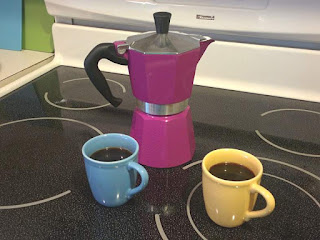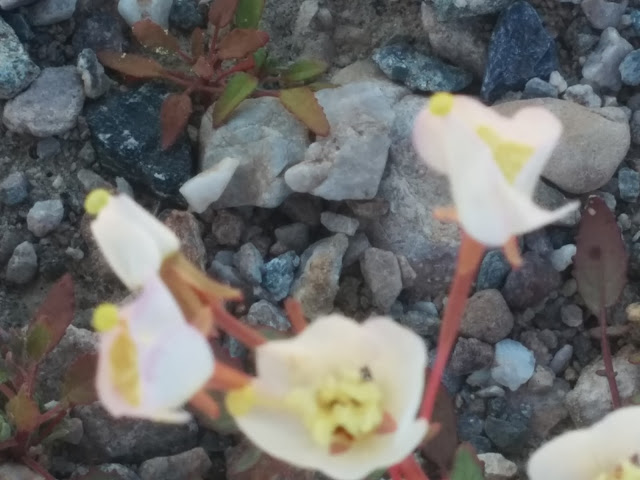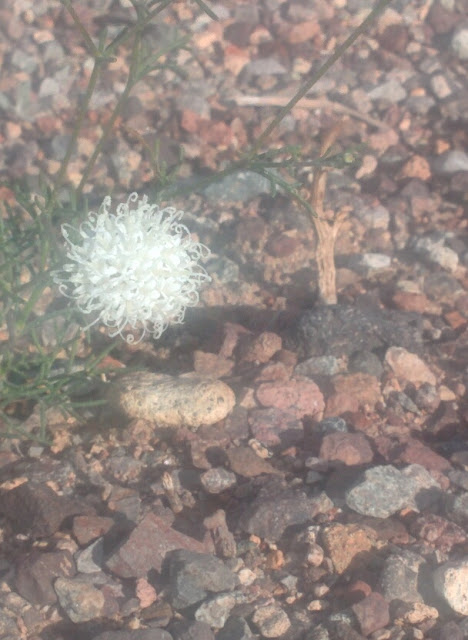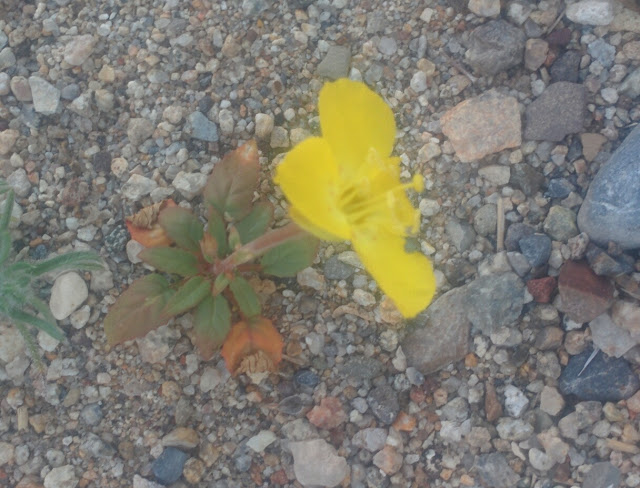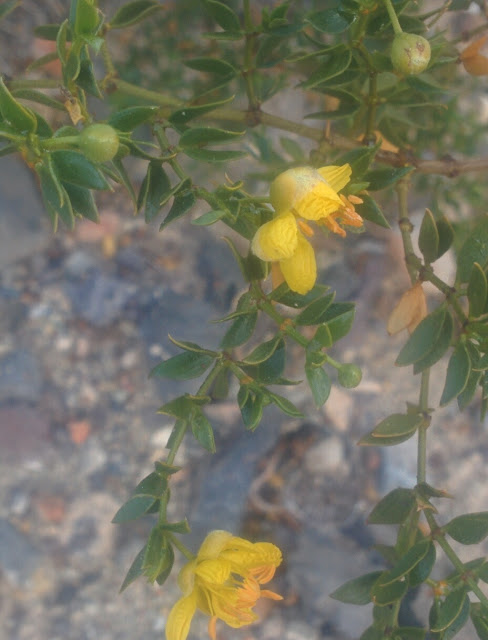Seattle from Kerry Park
Does Wanderlust End When You Come Home?
Nancy says: Oh dear friends, we are back in Seattle. We arrived March 20, after a winter's worth of ambling across the South, Southwest, and West Coast.
Juliannee says: OK, maybe ambivalent about being back. Dreary weather. Different city now. Will our friends remember us? Besides, I could have kept traveling.
Nancy continues: Blog posts already made (see list in sidebar) tell about some of the places we went December-March. We saw New Orleans (link to our post is here), Houston for the Menil Collection, west, west across Texas and New Mexico (Las Cruces, where I lived two years in my 20's, now completely different).
Three weeks in Tubac, AZ, a charming historical village and arts center south of Tuscon, with Julianne's sister Kitty and some of her friends from Alaska. (link to post on birds here)
Tubac is in the Sonoran Desert. Some desert plant life:
Julianne says: We liked it so much that later Kitty and I bought a house there.
Nancy carries on: On to Jerome, AZ (visited Novie Trump), Grand Canyon, Las Vegas (visited Eva Peterson), Death Valley filled with flowers, around the southern tip of the Sierra Nevada, across central California to Hwy 1, up the coast. Bay Area (visited Rita Dolfing, Jessie Ortiz, Teddie Hathaway, Jen Rose, Cara and Luke Davis). North through redwoods and along Oregon beaches to Tillamook. East to Portland (visited Mary Mullen and Lily), and a last push to Seattle.
Nancy thinks it's lovely to be home! Our condo with its view west to the mountains....oh wait, those are construction cranes and new buildings in the vigorous Seattle economic boom. Goodbye mountains, hello urban vistas.
I had put my stored stuff in the condo when I visited in August 2015, so a basic livable place was waiting. Our friends came, much visiting. We drove around the "new" Seattle reminding ourselves of our city and our former lives here.
We've had a good time this year re-acquainting with our friends. The Monday Night Potluck group continues central to our week and friendships. We see a lot of Cynthia and Jean, and our friends Lyn and Charles moved to Tacoma from DC in December. With Carol Hannum's daughter Teo hosting, we had a marvellous caroling party just before Christmas, with me playing piano like years ago. Reminded me how much I miss having a piano!
Year of the U-Haul, or, Do We Need This Stuff?
The condo had a nice open feel. One armchair, a table and 4 chairs, one mattress, almost nothing in the kitchen. Lots of art supplies. Maybe a bit awkward...we rented another bed and chair and went to Value Village and Goodwill. Kitty visited, friends came over.
In June, Julianne flew to DC. She and our dear friend Olivia drove a U-Haul across the country with all the possessions we had stored in 2014. They had a wonderful time, and arrived June 26, just as the elevator broke in our building. Son Tim managed the helpers and saved our bacon, and suddenly our apartment was stuffed to the gills!
Who knew we had so much stuff? We've been lightening up ever since. A major emptying is about to happen, as we U-Haul stuff down to Arizona at New Year's.
How Many Houses?
Julianne says: Three. 1 Seattle condo, 1 DC row house, 1 snowbird home in Tubac, AZ.
Nancy says: Julianne and her sister Kitty are close. Kitty lives in Alaska, where she has a home and business, love and friends, a life. But the sun goes away in winter, and Kitty longs for sunlight. Julianne's like that too, though Seattle isn't as dark as Anchorage so the effect is less.
Happens there are houses for sale in Tubac, AZ, snowbird retreat of many from Alaska. There's one - oops, not that one. Here's another - oops, sold. Ah, it's on the market again. Snap it up!
And so, a house for Kitty and Julianne where the cactus blooms and snowbirds congregate. Spend the dark time in the Southwest, where skies are clear and sun stays longer. Not abandoning the North, but taking a break. Recouperating. The sun as medicine.
We're going there for January (me) and Jan/Feb (Julianne), taking a U-Haul with furniture and homey things. And of course, art supplies.
Julianne adds: DC house on Mass Ave SE remains in our lives but with renters, not us, living there. Opportunity for visits to fix things and putz around our old neignborhood, enjoying our old life as a vacation.
Can Art Still Happen?
Yes, it seems renting a studio in a building full of artists is possible. Twenty years of journals, photos, glass, paintings and drawings, sketch books and materials all in one place and accessible. No deep storage here. Had an open studio in September, and a Christmas open studio in December. Both well attended, and made enough sales to cover the rent, so that was good.
Nearly paralyzed with the possibilities. My history in art is, going off in all directions, loving every kind of artmaking. Focus! I don't do everything well. And it seems I have to avoid heavy lifting (a problem with cast glass) and health threats (problematic: oils and acrylics).
I can draw, that's a start. A class in botanical illustration, complicated but rewarding. First place, Still Life, Gage Academy, June 2016. Took another class, taking a third in 2017. A good skill set, I hope. Here's a casual sketch shortly after surgery:
In 2017, I look forward to a mash-up of printmaking, exacting drawing, and splashing around in watercolor. If it's not fun, I don't finish things. So, I'm looking to have a good time.
Does Time's Arrow Point Only One Way?
Not exactly. Case in point, my new knee, solid steel, August 2. The old knee gave me a world of trouble for a long time. Lots of pain pills. In Rome 2014 I bought a cane. Walked less, saw less, did less. This is the definition of decline.
Twisted my knee in Belfast. Doctor in Dublin, no help. Back to Seattle for a while in August 2015, joined Virginia Mason Medical Center. Cortisone shot into the knee, helped for a while. Another in April 2016. Face facts: this knee is not going to get better. Get a new one.
I couldn't have faced it without Julianne. What a saint! Five months later, the new knee works pretty well, though it has a click and occasionally the tendons around it ache. Muscles getting stronger. Physical therapy, exercise class. I can mainly handle stairs now. We've started contra dancing once a week. What fun!
Birds, Birds, Birds
Julianne says: Louisiana--Ahinga, Red Hawk, Crested Caracara. Way fun to be in a place where many birds are new to me. West Texas and New Mexico--first taste of the SW after years. Arizona--birding heartland from deep deserts to Sky Islands. And years to explore more. Well, we were in Condor territory in the Grand Canyon and Big Sur. Maybe next year we'll see them. Then, Point Reyes and on up the coast.
Now back to my birdy home in the Pacific NW. A life goal--get out in a boat off the Olympic Peninsula. Got there in April. Ancient murrelets, marbled murrelets, yellow-billed loons. We were there for the raptor migration when the raptors (really all migrants) gather up near Neah Bay until the winds are right to cross to Vancouver Island and points north. In this picture of sea ducks, there's a marbled murrelet in the foreground.
Our totally urban condo has a hidden green garden, which had surprisingly many migrants and nesters. Our hummingbird feeder supported a nesting family of Annas hummers. Some are still here in late December.
Malheur National Wildlife Refuge in October.
Puget Sound winter--snow geese, trumpeter swans, long-tail ducks, harlequin ducks. It feels like home.
I guess we really are home, and happy to receive visitors. We'll put on the coffee.
By Nancy and Julianne, photos by both









